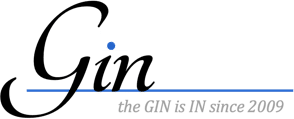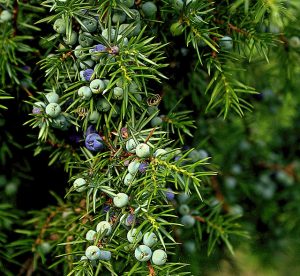
Juniper is the only botanical required to make a gin, a gin. In general, juniper manifests in gin with one of five primary facets: pine-forward, herbaceous, green, resinous and waxy.
It is part of the legal definition in many places. Gin must have a “predominant” flavor derived from juniper.
Popular botanicals in gins
For centuries, gins have often featured an accord of juniper, coriander, angelica, some sort of citrus fruit, and orris root. Many gins rely on this to create the “classic” gin flavor. In modern times the botanicals that are in use have expanded greatly. Many of these “contemporary” flavors like cardamom, lavender and cucumber are recent innovations in gin. Some of these botanicals have only taken off in gin since the late 00’s during the Gin Renaissance
Coriander
Next to juniper, coriander is the most common botanical in gin. Coriander seeds, better known as the seeds of the cilantro plant can represent a significant proportion of the botanicals other than the juniper in most gin.
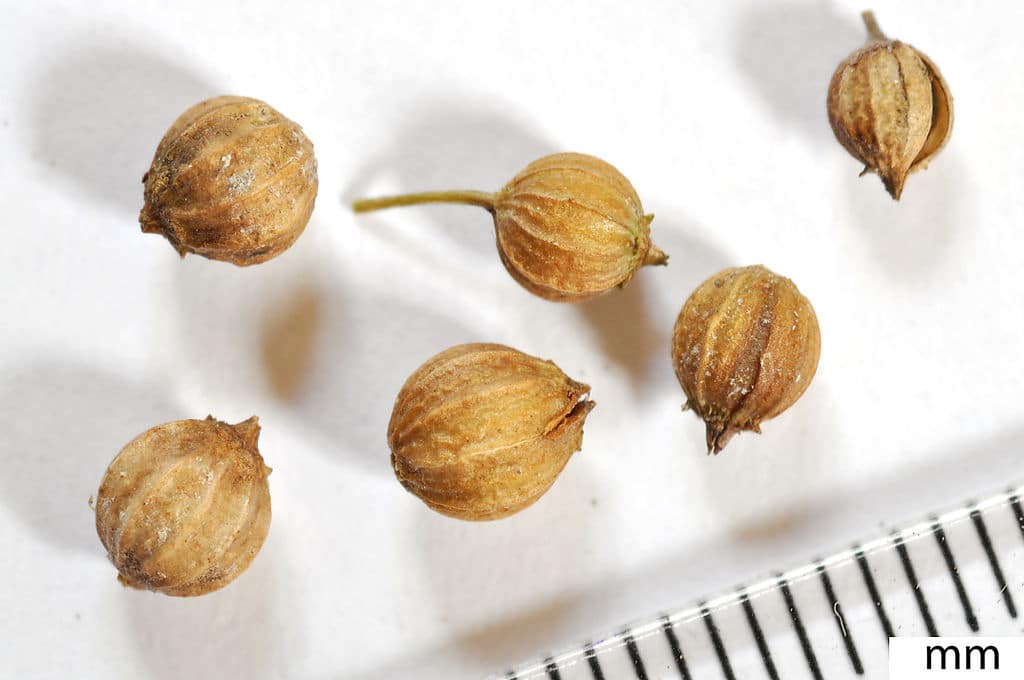
Angelica root
The common variety of Angelica used in gin has been cultivated as a vegetable since at least the 10th century in Northern Europe. Often, the root is used in gin, owing to its intense, fragrant odor, though others parts, including the seeds, may be used.
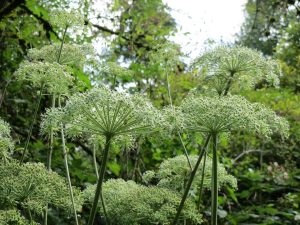
Cassia bark
Cinnamomum cassia is differentiated from “true” cinnamon. Cassia is prized by distillers. The bark is thicker, and although some describe the flavor as being “less delicate” than true cinnamon, the thicker, hardier bark is better suited to distillation.
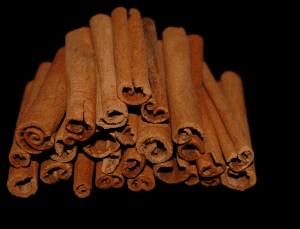
Citrus fruits
Citrus fruits are a core botanical of many gins.
Lemon and Bitter Orange are the most common; however, the range is as varied as the family of citrus itself. Bergamot, Lime, Australian Finger Lime, Yuzu, Grapefruit, and even Pomelo. And that’s only the beginning.
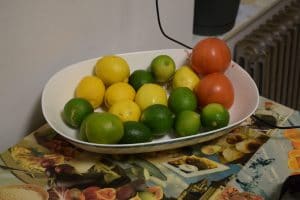
Cardamom
Cardamom is among the world’s most expensive spices, only surpassed by vanilla and saffron. The plant is native to Southeast Asia, in particular India which has been one of the world’s largest producers since the days of the spice trade.
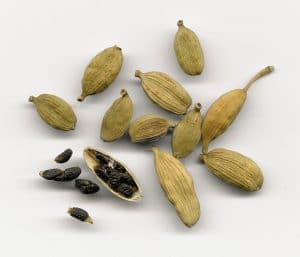
Cucumber
The aroma of cucumber is slightly melon and bitter. People describe it’s flavor as “green.” Cucumber distilled often takes on a stewed vegetal flavor and therefore many distillers, taking cues from early cucumber-gins like Martin Miller’s and Hendrick’s have turned to adding cucumber after distillation.
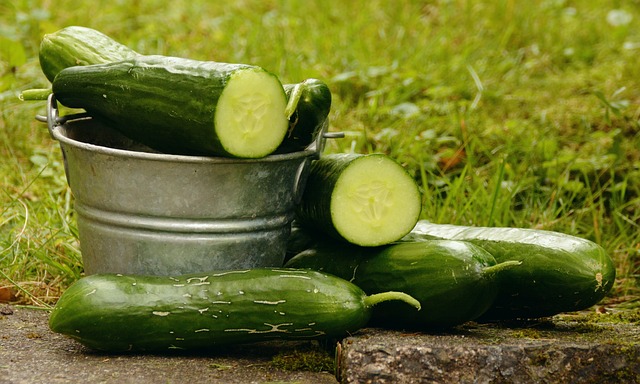
Lavender
So common in modern gins that one gin writer remarked, “Lavender is the quintessential American botanical.”
Though widely used in modern American gin distillation, Lavender and its distinctive essential oil has been popular in cooking and perfume for centuries.

All Botanicals in our database list
- Acacia (3)
- Acai (1)
- Akamatsu (1)
- Albariño Wine (1)
- Alexander Seeds (4)
- Allspice (10)
- Almond (60)
- Amanatsu (1)
- Amarillo Hops (1)
- Ambrette Seed (2)
- An Entire Gingerbread House (1)
- ancho chile (1)
- Ancho Chili (1)
- Angelica (341)
- Angelica Seeds (7)
- Angostura (1)
- Anise Myrtle (2)
- Anise Seed (1)
- Aniseed (48)
- Ants (1)
- Apple (12)
- Apple Liqueur (1)
- Apple Mint (3)
- apple pip (1)
- Apricot Pits (1)
- Arctic Blend (1)
- Arctic Thyme (1)
- Aronia Berry (1)
- Artichoke (1)
- Ashwagahnda (1)
- Australian Green Ants (1)
- autumnberry (1)
- Avocado Leaves (1)
- Balsam Pine (1)
- Balsamic Vinegar (1)
- Bamboo Leaves (2)
- Baobab (2)
- Barberry (1)
- Barley Malt (1)
- Basil (10)
- Bay Laurel (9)
- Bay Leaf (2)
- Bay Leaves (2)
- Beach Plum (2)
- Bee Balm (3)
- Beeswax (1)
- Beetroot (1)
- Bell Pepper (1)
- Bergamot (16)
- Bilberries (1)
- Bilberry (5)
- Birch (4)
- Birch Leaves (2)
- Bitter Almond (3)
- Bitter Orange (1)
- black carrot (2)
- Black Currant (4)
- Black Currant Leaves (1)
- Black Pepper (25)
- Black Tea (3)
- Blackberry (5)
- bladderwrack (1)
- Blood Orange (8)
- Blue Pea (1)
- Blueberries (4)
- Blueberry (8)
- Bluebonnet (1)
- Bog Blueberry (1)
- Bog Myrtle (10)
- Boobiala (1)
- brazil nut (1)
- Brazilian Peppertree (1)
- Buchu (2)
- Bunya Nut (1)
- Butterfly Pea Flower (5)
- Cactus Flower (1)
- Cahmomile (1)
- Calamansi (2)
- Cálamos (1)
- Calamus (2)
- Camu Camu (1)
- Cantaloupe (2)
- Cape Goosberry (1)
- Cape Gooseberries (1)
- Caraway (50)
- Cardamom (172)
- Cardamom. Hibiscus (1)
- Carline Thistle Root (1)
- Carnation (1)
- Carob (2)
- Cascade Hops (1)
- Cassia (131)
- Cedar (2)
- Cedar Berries (1)
- cedar berry (1)
- Celery (3)
- Celery Seed (3)
- Centennial Hops (1)
- Ceylon Cinnamon (1)
- Chamomile (51)
- Cherry (3)
- Cherry Blossom (3)
- Cherry Leaves (1)
- chervil (1)
- Chestnuts (3)
- Chevril (1)
- Chicory (1)
- Chicory Root (1)
- Chili (1)
- Chinook Hops (1)
- Chocolate Truffles (1)
- Cholla (1)
- Christmas Cake (1)
- Christmas Puddings (1)
- Cilantro (4)
- Cinchona Bark (5)
- Cinnamon (132)
- Cinnamon Myrtle (2)
- Citra Hops (1)
- Citron (3)
- Citrs Hops (1)
- Citrus (11)
- Clay (1)
- Clementine (1)
- Clotted cream (1)
- Cloudberry (2)
- Clove (12)
- clove vine (1)
- Clover (7)
- Cloves (18)
- Cobnut (2)
- Cocoa (8)
- Coconut (2)
- Coffee (3)
- Colewort (1)
- Columbus Hops (1)
- Coriander (472)
- Cornflower (2)
- Cornichon (1)
- cowberry (1)
- Cranberries (2)
- Cranberry (7)
- Cranesbill Root (1)
- Crowberries (2)
- Crowberry (1)
- Cubeb (18)
- Cubeb Berries (2)
- Cubeb Pepper (32)
- Cucamelon (1)
- Cucumber (33)
- Cucumber Peel (1)
- Cumin (8)
- Currant (1)
- Currant Leaf (1)
- Currants (2)
- Cypress (1)
- Damiana Leaf (1)
- Damson (3)
- Dandelion (5)
- Darjeeling Tea (1)
- Date (1)
- Dekopon orange (1)
- Desert Lime (2)
- Devil's Claw (1)
- Devils'S Claw (1)
- Dill (15)
- Dill Seed (4)
- Dog Rose (1)
- Douglas Fir (5)
- Dragon Fruit (1)
- Dried Riesling Grapes (1)
- Dulse (1)
- Dune Pepper (1)
- Earl Grey Tea (3)
- Elderberry (13)
- Elderflower (58)
- Elephant Dung (1)
- Eucalyptus (4)
- Fennel (52)
- Fennel Seed (4)
- Fenugreek (1)
- Fig (4)
- figs (1)
- Finger Lime (6)
- Fir (3)
- Fir Buds (1)
- Fir Tip (1)
- Fireweed Tea (1)
- Frankincense (2)
- Frankinsence (2)
- Fuchsia (1)
- Galangal (7)
- Genepy (2)
- Gentian (4)
- Gentian Root (1)
- geranium (1)
- Ginger (62)
- Ginseng (4)
- Goji (1)
- Gold (1)
- Golden Berry (1)
- Goldenrod (1)
- Gooseberry (1)
- Gorse Flowers (4)
- Grains Of Paradise (68)
- Grape Flowers (1)
- Grapefruit (83)
- Grapes (1)
- Green Juniper (1)
- Green Mandarin (1)
- Green Onion (1)
- Green Peppercorn (1)
- Green Tea (14)
- Green Yuzu (1)
- Guajillo Pepper (1)
- Guarana (1)
- Guava (1)
- Gunpowder Tea (1)
- Gyokuro Green tea (1)
- Hawthorn (2)
- Hawthorn Berries (5)
- Hawthorne Berries (1)
- Hay Flower (1)
- Hazelnut (3)
- Heather (13)
- Heather Flowers (1)
- Hebridean Tea (1)
- Hemp (1)
- Hibiscus (37)
- Hinoki (2)
- Hirami Lemon (1)
- Holy Basil (1)
- Honey (15)
- Honeysuckle (9)
- Hop Blossom (1)
- Hops (17)
- Horehound (1)
- Horopito (1)
- Horse Parsley (1)
- Horseradish (1)
- Hot Pepper (1)
- Hyssop (6)
- Icelandic Moss (1)
- Indonesian Cinnamon (1)
- Iris (10)
- Japanese Pepper (1)
- Jasmine (10)
- Juniper (910)
- juniperus californica (1)
- Juniperus occidentalis (1)
- Juniperus procera (1)
- Juniperus virginiana (1)
- Kabosu (1)
- Kafir Lime Leaves (3)
- Kale (2)
- Kawakawa (2)
- Key Lime (3)
- kinmokusei flowers (1)
- Kombu (1)
- Komikan (1)
- Kumquat (4)
- labdanum resin (1)
- Labrador Tea (2)
- Labuyo Chili Pepper (1)
- Lady’S Bedstraw Flowers (1)
- Laminar Seaweed (1)
- Laurel Fruit (1)
- Lavender (91)
- Lebkuchen (1)
- Leek (1)
- Lemon (316)
- lemon aspen (1)
- Lemon Balm (9)
- Lemon Myrtle (11)
- Lemon Peel (1)
- Lemon Scented Gum (1)
- Lemon Thyme (2)
- Lemon Verbena (21)
- Lemongrass (36)
- Licorice (162)
- Lilac (2)
- Lilly Pilly (1)
- Lily Of The Valley (1)
- Lime (70)
- Lime Flower (2)
- Lime Liqueur (1)
- Limón Mandarina (1)
- Limone Di Sorrento (1)
- Linden (1)
- linden flower (1)
- Linden Leaf (1)
- Lingonberries (1)
- Lingonberry (8)
- Lion's Tail (1)
- Loganberry (1)
- Long Pepper (1)
- Longan (2)
- Lotus Flower (2)
- Lotus Leaves (1)
- Lovage (3)
- Lychee (1)
- Macadamia (1)
- Mace (3)
- Magnolia (2)
- Makrut Lime (2)
- Makrut Lime Leaves (4)
- mallow root (1)
- Mandarin (8)
- Mānuka (1)
- Manuka flower (1)
- Manuka Honey (1)
- Maple (1)
- maple syrup (1)
- Marigold (3)
- Marjoram (4)
- Marshmallow (3)
- Marula (1)
- Masterwort (1)
- maxixe (1)
- Meadowsweet (18)
- Medlar (1)
- Melon (1)
- Mesquite Bean (1)
- Meyer Lemon (3)
- Milk Thistle (1)
- Mine Pie (1)
- Mint (24)
- Mirabelle Plums (2)
- Moon Rock (1)
- Moss (1)
- Mountain Pepper Leaf (1)
- Mugwort (2)
- Mulberry (2)
- Mushroom (1)
- Myrrh (3)
- Myrtle (1)
- Natural Flavors (1)
- Nettle (3)
- Nutmeg (65)
- Oak (2)
- Oak Moss (1)
- Oats (1)
- Olida (1)
- Olive (2)
- Orange (319)
- Orange Blossom (6)
- Orris (7)
- Orris Root (228)
- Osha Root (1)
- Ox Eye Daisy (1)
- Pandan Leaves (1)
- Panettone (1)
- Parsnip (2)
- Passion Flower (3)
- passion fruit (1)
- Peach (4)
- Peach Liqueur (1)
- Peach Skin (1)
- Pear (2)
- Pecan (3)
- pennyroyal (1)
- Peperina (1)
- Pepper (5)
- Pepper Berry (3)
- Pepperberry (1)
- Peppercorn (3)
- Peppermint (4)
- Peppermint Gum (2)
- Persian Lime (2)
- Persimmon (1)
- Pimento (3)
- Pine (3)
- Pine Blossom (6)
- Pine Forest Spikenard (1)
- Pine Needles (3)
- Pine Resin (1)
- pine tips (1)
- Pineapple (5)
- Pineapple Liqueur (1)
- Pink Grapefruit (1)
- Pink Peppercorn (22)
- Piñon (1)
- pistachio (1)
- Pixie Orange (1)
- Plum (4)
- Pomander (1)
- Pomegranate (2)
- Pomelo (6)
- Poplar Buds (1)
- Poppy (2)
- Potato (1)
- quandong (1)
- Quince (5)
- Quinine (1)
- Raisin (1)
- Ramps (1)
- Rangpur Lime (1)
- Raspberry (11)
- Raspberry Leaf (3)
- Red Cedar Juniper (1)
- red clover (2)
- Red Mandarin (1)
- red pine (1)
- Reindeer Lichen (1)
- rhodiola (1)
- Rhubarb (16)
- Riberry (2)
- Riesling (1)
- River Mint (1)
- rooibos tea (1)
- Rose (53)
- Rose Hip (3)
- Rose Hips (30)
- Rose Mallow (1)
- Rose Petals (1)
- Rosehips (1)
- Rosemary (30)
- Roses (1)
- Rowan Berri (1)
- rowan berries (1)
- Rowan Berry (5)
- Sacha Inchi (1)
- Safflower (1)
- Saffron (8)
- Sage (29)
- Salt (2)
- Saltbush (1)
- Samphire (4)
- Sandalwood (1)
- Sansho (3)
- Saskatoon Berries (1)
- Sasparilla (4)
- Satsuma (2)
- Savory (10)
- Sea Buckthorn (4)
- Sea Kelp (2)
- Sea Lettuce (1)
- Sea Parsley (2)
- Sea Pink (1)
- Seabeans (1)
- Seaweed (4)
- Selim Pepper (1)
- Sencha Green Tea (4)
- Sencha Tea (1)
- Sesame (1)
- Shiraz Grapes (1)
- Shiso (3)
- sichuan pepper (3)
- Sloe (5)
- Sloes (4)
- snap peas (1)
- Sorrel (2)
- Spearmint (1)
- Spicebush (3)
- Spruce (3)
- Spruce Needles (1)
- Spruce Shoots (2)
- Spruce Tips (5)
- St John'S Wort (2)
- Star Anise (35)
- Strawberry (6)
- Strawberry Gum (2)
- Sumac (4)
- Swahili Lime (1)
- Sweet Cicely (2)
- Sweet Flag (2)
- Sweet Grass (1)
- Sweet potato (1)
- Sweet Woodruff (1)
- Szechuan Pepper (1)
- Szechuan Peppercorn (2)
- Tangelo (1)
- Tangerine (10)
- Tansy (3)
- Tarragon (5)
- Tasmanian Pepperberry (8)
- Thai Basil (1)
- Thistle (3)
- Thyme (14)
- Tonka Bean (3)
- Turmeric (3)
- Ume (1)
- Vanilla (31)
- Verbena (1)
- Vetiver (2)
- Victoria amazonica (1)
- Violet (6)
- Violet Candy (1)
- Violet leaves (1)
- Water Mint (2)
- Watercress (1)
- Watermelon Rind (1)
- Watermint (2)
- Wattle Seed (2)
- Western redcedar tips (1)
- White Pepper (3)
- white pine (1)
- white sage (1)
- White tea (1)
- Wild Geranium (1)
- Wild Iceland Moss (2)
- Winter Savory (3)
- Wood Sage (2)
- Woodruff (2)
- Wormwood (5)
- Xiang sha (1)
- Yarrow (11)
- Yatsushiro citron (1)
- Yaupon Holly (1)
- Yellow bedstraw flowers (1)
- Yerba Mate (1)
- Yerba Santa (1)
- Yuzu (17)
- zedoary (1)
